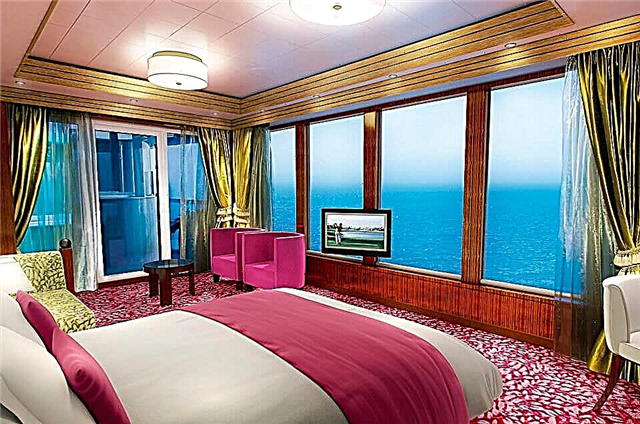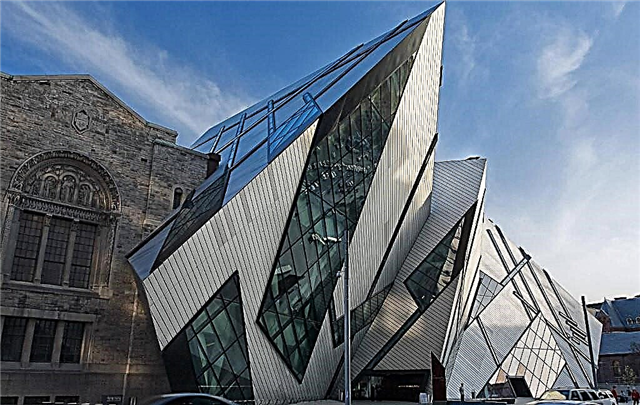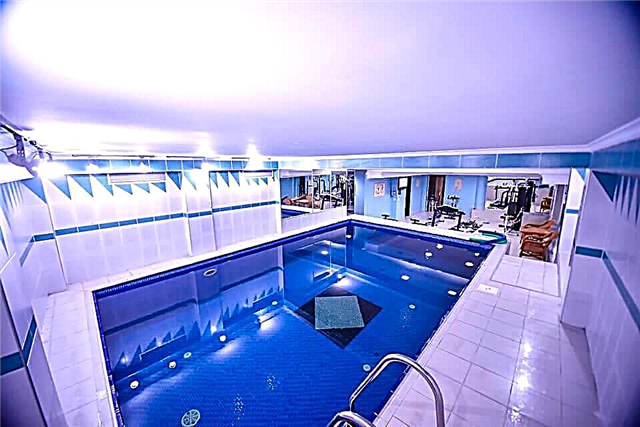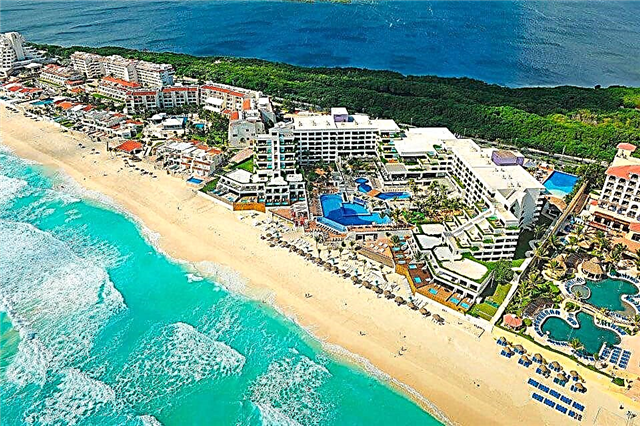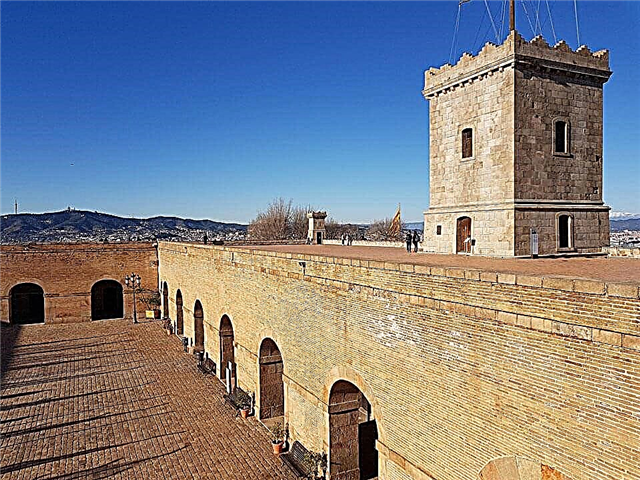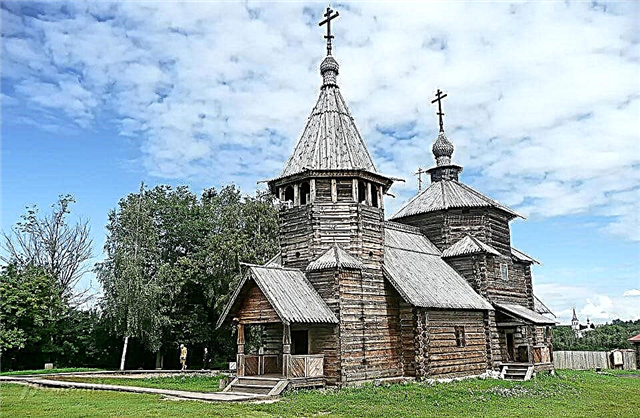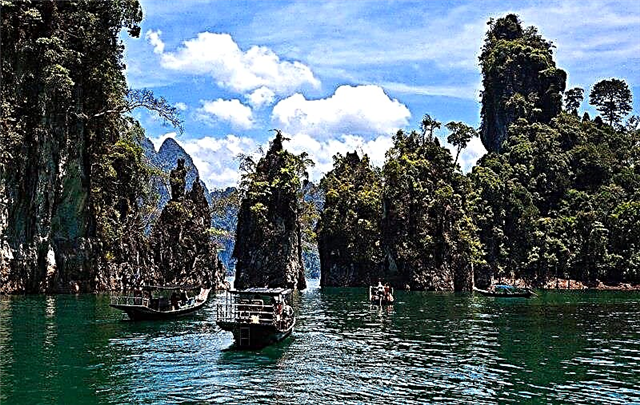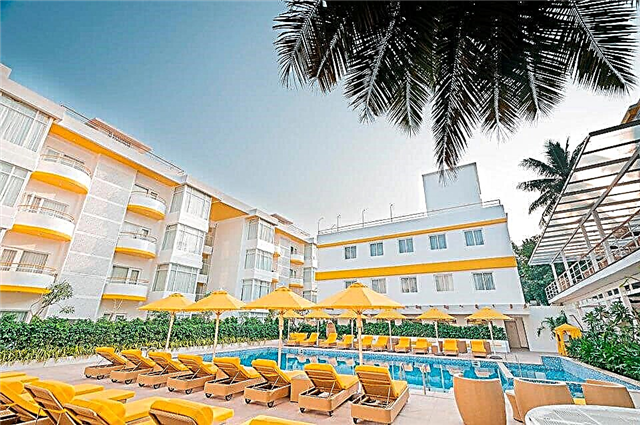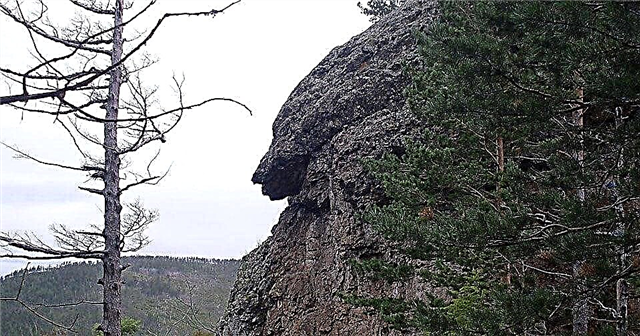The life of our planet has been forming for many millions of years. Mountains, oceans, giant waterfalls, endless underground kingdoms of caves, fire-breathing volcanoes appeared. They, like eternal guards, watch the successive generations of people who seek to penetrate their eternal secrets. Among the wild untouched nature, there are many unusual places reflected in legends, songs, cult rites, and fairy tales. They are studied, protected, creating reserves, security zones. One of them is called Alkhanay National Park. It is located in the Trans-Baikal Territory, not far from the city of Chita. There, where silently rises the sacred mountain Alkhanay, which preserves the system of cult monuments of Buddhism.
History

The park was organized on an area of about 200 (the buffer zone occupies 105 hectares) in 1999 and is the youngest in Russia. In the ancient attractive region of Transbaikalia, known for its amazing landscape, a zone has been created that allows preserving the natural heritage for many generations. Here, along with natural attractions, are the outstanding spiritual wealth of Christian, Buddhist shrines (it is considered the fifth Shrine of Northern Buddhism). Several hiking trails (stone paths) have been laid through the park, allowing you to see 20 religious monuments, decorated in 1891. The complex consists of 53 stone buildings (obo or munkhan, meaning chapel and baypurs).
Stone buildings are used for ritual bonfires and khurals. Since ancient times, the population has believed in the magical possibilities of the power zone of the mountain range with healing springs, complex stone figures. The flow of pilgrims to energy places is increasing every year. Their trek along the stone paths is compared to the spiritual development of mankind, its physical purification.
The number of colored ribbons, gifts left by travelers according to local customs, flutters in a multi-colored carpet in the sacred place. It is noteworthy that in 1991 the head of the Buddhist religion Dalai Lama XIV Danzan Zhamso was present at Alkhanai and consecrated this place. In honor of the memorable event, a symbolic monument was erected - a stupa.
Many areas of the park are open to the public. The scientific organization of the Aginsky University operates on its territory. It has an interesting room with procedures used by Tibetan medicine. Old-time massage sessions, recommendations for medicines from local plants, pulse method for identifying diseases. They are all available.
Geography

The borders are laid along the Daursky and Mogoytuisky mountain formations along the Ilya River. The center of the park is Mount Alkhanay or an ancient type of paleovolcanarium. During a powerful explosion of the top of the volcano, a caldera, remnants of mountain rocks, weathered lava flows, tuff deposits, mountain terraces, deep faults, and volcanic lakes were formed. Scientists attribute the age of the peculiar deposits of the volcano to the Late Jurassic period.
Of these, nature has created numerous geological, tectonic, geomorphological types of monuments. Around the volcanic zone, a riverbed of the Early Jurassic time (relating to the period of the volcanic lavas existence before their outflow), the system of Ilin lakes, mud volcanoes with mini-cones were discovered. There are 37 streams of various sizes flowing through the park. The main lakes are Alkhanayskoe, Balzino, Krasnoyarovo. Imprints of their inhabitants, the Palaeolynceus conchostracus, have been found in ash deposits.
The main part of the park is occupied by strangely shaped ingimbrites or tuffs formed at the last moment of the volcano's action. The ecosystem of the Alkhanay National Park includes steppes, forests, mountains, taiga, rivers in waterfalls (kurums). The combination of natural resources of the vast Daurian steppes, boreal forests of Eurasia create a special atmospheric zone with a variety of biological species of flora and fauna.
Fauna

The peculiarity of the geographical position of the park lies in the appearance of conditions for the life of different species of animals. Dense forests, steppes, reservoirs, climate allow representatives of European, Far Eastern, Manchurian species to live and reproduce. In the protected area, 120 types of vertebrates, 4 classes of amphibians, 30 mammals, 4 reptiles, 95 birds have been registered. Described 160 species of insects, 17 fish, 2 amphibians, 4 reptiles. There are 18 types of fish in lakes and rivers.
Among them are taimen, grayling, lenok. Brown bears, musk deer and roe deer walk through forests and mountains. Elk, red deer, wolves, foxes, ermines. The living space next to the placers of stones was mastered by the Altai pika from the order of Lagomorphs. Its specific whistle is heard next to tourist routes along stone paths. The life and habits of all animal species are constantly being studied by the park's specialists.
Flora

The territory is covered with deciduous and mixed forests. There are pine, cedar, birch and oak groves in them. Frequent neighbors of thickets are areas of kurums (placers of stones). Plantations of accompanying plants grow next to them: Manchurian elderberry, Siberian barberry and mountain ash. Dense meadows of Altai onion, celandine, fragrant shield plant. Over the entire area, 960 plant species were found. Among them are ferns, lycopods. Covered and gymnospermous types. About 20 species are included in the Red Book lists and belong to protected plants.
Landscape diversity has created conditions for the growth of 130 types of mosses. Almost 180 plant species have been used by traditional healers for centuries. These are Rhodiola rosea, Baikal skullcap, Chinese lofant, compact rhubarb, astragalus. Many plants are depicted in paintings by famous artists (for example, the Venus's shoe). The view of a majestic fern fills the surrounding space with an extraordinary aroma of freshness and reminds of the times preserved by it from the period of the first plants that appeared on our planet.
What to watch

A tourist trip along the trail leading to the top of the sacred mountain provides an opportunity to see the beauty of an extraordinary natural landscape, listen to the murmur of water in healing springs, and touch the secrets of ancient Buddhism. The first question arises immediately when you see a stone wall running parallel to the path. What is it who built it? The answer lies in the ritual actions of the pilgrims walking with the prayer "Om mani padme hum" and lifting a stone that interferes with movement to facilitate the path of subsequent people.
Near the sights created by nature in the form of mysterious stone figures, there are Buddhist stupas, harmoniously combined with the phenomena of nature. The main attractions are a stone wall with a Tibetan text carved into the rocks. Dorzhe Pagmyn Sume (Temple of the Diamond Queen - the wife of the ruler of the mountain), "The Crevice of Sinners", the Womb of the Mother (Ehyn Umai). Nara Hajad (Celestial Musician), Uuden Sume. A special place is the top of the mountain, where any traveler aspires. Especially during the annual rite of the city.
Mount Alkhanay

The mysterious alien from the Jurassic period resembles a fabulous ship lost for millennia. The mountain is the highest point in the park and represents the historical legacy of a rare geological phenomenon. Its top ends with a stone platform in the form of a circle of almost regular shape, lined with small fragments of rocks (with a diameter of about 34 m). A ritual (for the rite of a goroo) path runs along the circumference, and there is a triangulation sign of the state. The ancient streams of the Ilya and Daldurga rivers frame the mountain. There are many legends and myths associated with the cult shrine of Buddhists.
One of them is called "How the gods did the mountains."The summit seems to support the sky and the gods calmly descend. The sacred place served as the historical basis of the cult in the religion of the local Buryats. The Dalai Lama himself prayed on this mountain. It is interesting that the strict requirement to comply with the rules of the suburgan (erected in honor of the lama in the surrounding steppes) forever expelled the shamans with their rituals from the holy mountain. When visiting the mountain, it is suggested to visit this stupa outside the village of Tsugol. It has small drums with mantras, amazing sound.
Temple of Great Good

At the foot of the famous mountain there is a temple of the Great Benefit. This is a must-have item for any excursion program. Inside the temple there is a natural grotto with a crevice. Healing water oozes from it. Its medicinal properties have been known since ancient times and were used by local residents during illness. Pure, crystal water from the arshan (source) has no smell, taste, belongs to the hydro, carbonate, calcium type with a high content of useful microelements. The percentage of iodine, silver, selenium, fluorine is many times higher than the average statistical values in the surrounding water resources of Transbaikalia.
The bathing places of each spring are equipped with gutters carved from the trunks of young trees. Believers drink water and always leave gifts in the form of grain and coins. In the temple, it is forbidden to make offerings with sweets, sweets, milk, and other products. It must be remembered that further climbing the mountain after the Temple of the Great Benefit cannot be made with pets, alcoholic beverages, cigarettes. It is forbidden to move stones, tie scraps of cloth (believers adorn the neighborhood with them according to well-known rituals). Incense and prayers should be essential elements anywhere in the sacred ground of the park.
Sandam's Rock

Two km of ascent separate the temple from the Sandham rock. The heavenly fairy of wisdom or the image of a lion-faced dakini is frozen in a stone rock statue. The strongest protector of believers, followers of the Buddha's teachings, endows the pilgrims with magical power while walking around her. Good triumphs, tranquility triumphs, peace on earth. In this aggressive time, this is needed more than ever. The guardian of the feminine principle helps in the upbringing of children, in their acquisition of knowledge of science.
Many customs and rituals (according to the local Khoris - Buryats) held anywhere in the park are closely related to the magical power of Olkhon Island on Lake Baikal. It is believed that they have common elements of culture and so far the sacrifices go directly to the owner of the island. Like any other remnant, the rock grew out of volcanic remnants of rocks with white splashes against the background of dark volcanic stone. Nearby there are thickets of meadowsweet, raspberry, elderberry, scattered ancient curums covered with mosses and lichens.
Rock Temple Gate

This is a visiting card or the main attraction of the park. The gates to the divine world of Demchog, formed by the heterogeneous forces of weathering, connect the world with the legendary Shambhala, forming an energy channel. There is a legend about the creation of the Gate by the magical powers of shamans, who were expelled in ancient times (their cemetery can be visited while traveling to the park). The cult site before the Buddhist period is located at an altitude of 1100 m. A narrow stone path leads to it. The remnant survived in the form of two rocky spurs, between which an arch was formed.
It has an inner radius of about 6 m, an overhanging cornice with a height of about 10 m. But at the edge of the vault, you can see the Tibetan letter "A". On the rocky ridge, there are three groups of drawings made with ocher in red and yellow shades. They depict stylized animals, human figures, crosses, hieroglyphs dating back to the 1st millennium BC. The spur of the southern side sags down, the northern one stretches to the top of the mountain at a distance of about 15 m. A small stupa (suburgan) was built inside.
It was destroyed in 1930 and completely rebuilt in 1956. Around the stupa, pilgrims make a triple detour, read prayers, perform mantras. By these actions, they symbolize the entrance to the world of the deity Dimching. Buryats believe that passage through the Gate helps to cure cancer and other diseases. Every year on June 29, the Sogshid prayer service dedicated to the deities, the owner of Alkhanai Dimching, is heard at the Temple. The entrance to the temple is guarded by a guard. A little further is the Zaguurdi rock (Intermediate world). The soul of the deceased is here for 49 days before its rebirth.
Dorji-Pagman

"Diamond princess, diamond consort" means the word "dorji" or "vajra". A large remains are located at a distance of about 200 m from the Temple of the Gates. The height of the cliff is about 12 m, the size of the base is over 10 m. The path to it runs along the slope along the Ubzhogoye River. On the southern side of the rock, near its base, nature has created a natural niche, which became the zone of the altar of Dorji Pagmyn.
Near the "Diamond Princess" rock, travelers receive extraordinary relief from mental suffering and gloomy thoughts. As well as near the Ekhyn Umai rock (Mother's Womb), the pre-Buddhist cult of Mother Earth is held here. Women ask for help in having children, restoring health. Very often it is necessary to bring as a gift a pebble taken from a nearby cave. It is very difficult to find him now.
Alkhanai gate

The massive rock occupies an area of about 2 hectares on the spurs of the Mogoytuisky ridge on the left side of the Ubzhogoye valley. There are two sharp protrusions on the outlier. An arch formed between them. This is an object of cult rituals of local residents. The breath of an ancient volcano, the magical actions of shamans, the preserved rock paintings of ancient people create a special atmosphere of the entrance to the mysterious world of Mount Alkhanay.
Looking closely at the drawings, you can see the old Mongolian inscriptions, which have replaced the signs of shamans. The history of sacred places is forever frozen in natural creation. The erected stupa and the chapel make it possible to carry out existing rituals, to support ancient customs. This gives rise to an important spiritual, educational, aesthetic, tourist value of an element that is part of the complex of monuments of the National Park.
Where is it located and how to get there

Located 250 km from the city of Chita, Trans-Baikal Territory. When traveling by car, you need to choose the A166 road, get to the Darasun village, turn onto the A187 highway and move to the Daldurga village. Then turn to the northwest and drive to the Alkhanay settlement. There are no road signs, which requires special attention from drivers. The entrance to the park is marked 10 km from Alkhanay.
Not far from the checkpoint there is a stupa dedicated to the Dalai Lama. At the checkpoint, you must leave full information about yourself, pay an environmental fee for getting to know the recreational area. The total distance from the city is about 220 km and requires almost 4 hours of driving. The park administration is located in the village of Daldurga at st. Gagarina, 47. It is proposed to get to the city of Chita by plane.
Where to stay

To get acquainted with the amazing place of Transbaikalia, it is proposed to spend several days here. Accommodation can be campings, cottages, tourist centers. For tourists in the protected area there are two tourist bases ("Dali", "Alkhana-tour"). There are small summer campsites here. They have beds with linens, a table, a heater. On the street there is a toilet, a washbasin, a place for a fire.
The camping town has 30 four-bed living areas, a dining room, a sauna. There are sanitary zones, picnic areas, car parking nearby. The cottage community includes 7 two-storey houses with 2, 3, 4 bed rooms. It is proposed to take advantage of accommodation in 30 yurts with 80 places, furnished in the national style. Interesting excursions under the guidance of experienced guides of the National Park are recommended for travel. For three days of work, they ask to pay about 3000 rubles.
Best time to travel

In summer, when the surroundings of the mountains are decorated with lush vegetation, the healing streams themselves call to plunge, take baths, fill the body with new strength, is the best time to travel to the National Park. At the same time, it is useful to know that in the first half of September, nature opens a special period of "Rikha". The power of the healing waters of Alanhai becomes maximum. Many tend to come here at this time.
Of course, even now on the road it is imperative to take insect repellents, containers for drinking water, a first aid kit with medicines for first aid (there are medical personnel at the base). This will help a safe rest: with swimming in the Sukhoi-Ubzhogoye Arshan (the main mineral spring). By visiting the Intermediate world in the rock and determining the degree of his sinfulness (if a person crawls through a natural crack or purgatory, then there are no sins). Participation in the Buddhist rite of obo at the top of a sacred mountain.

